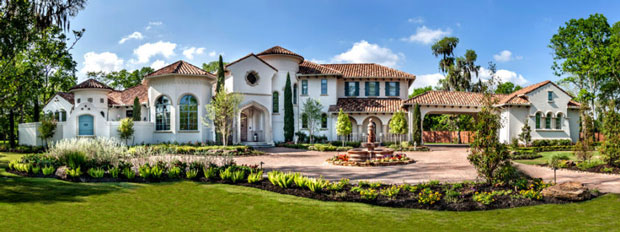Sater Group Blog
Wishlist For Your Custom Designed Home
Building a custom home is a daunting task, but it can be very rewarding with proper planning, preparation, wise choices and realistic expectations. This article will deal with planning and preparation and it starts with a wishlist.
Thoughtful itemization of each space and desired features is critical in effectively communicating to your design professional(s). It’s also important to have a discussion with them about the way you live and use your home. For example, do you like to entertain, cook, play games, read, etc.? Creating a home that fits your lifestyle is more important than the right collection of rooms.
As mentioned in our previous article, it is important to set realistic goals. One must consider your wishlist as it compares to your budget. I once had a client that wanted a list of spaces that would have been over 12,000 square feet and over $3 million to build. However their square footage requirement was 9,000 square feet and had a budget of $1.5 million. I responded by asking which house did they want to build? The 12,000, the 9,000 or the 5,000 square foot one they budgeted for?

I was once asked by a publisher to write a book titled “The Smaller Home”. I responded by saying “are you sure you have the right designer?” Our firm is mostly known for our luxury home designs. In that book I dealt with this issue in detail, even creating a wishlist template. It is important to prioritize each item, as your wishlist, budget and final cost to build often conflict. While that theater room may be nice, how important is that feature? Another part of the equation is honestly evaluating how often you would use that feature. We have done many home theaters, for example, and have found after the newness wears off, these room are seldomly used.
The Wishlist can be Time Sensitive
Another factor to consider is the longevity of use for a particular room or feature. We have created bedrooms for an infant near the Master Bedroom. By the time planning, permitting and construction are completed the child’s use of that space is no longer needed. They have matured in the process and no longer need to be right next to the parents.
When you list rooms and sizes, think more in terms of how many people you want to seat or accommodate This is more effective than deciding on a certain room size that may or may not accomplish the desired need.
Another proactive step is to list things you do not like in a home. I once had a client that gave me more stated dislikes than likes. This further helps your design professional in crafting your home design.
In conclusion, the more thought and detail invested into creating your wish list, the better your initial preliminary design results will be.
This is the fourth blog in a nine part series entitled “Custom Home Design’s Rewards and Challenges”. Dan F Sater II FAIBD/CGP is an award winning and internationally recognized residential designer. He has designed tens of thousands of homes and received over 500 awards in his thirty-five year career.